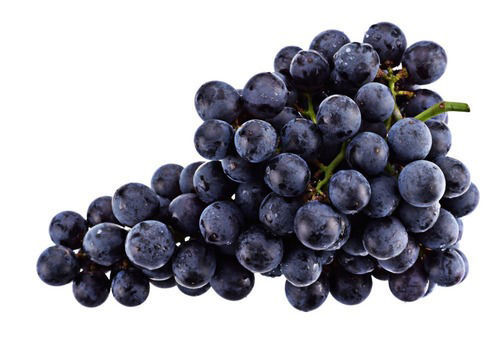Although grapes are one of the world’s most widely consumed fruits, many people overlook them. There is nothing like a sunny day to grow grapes. Finger fruits with an unusually sour-sweet flavor are among the most popular snacks in the world. Domestication of grapes, which are native to the Middle East and North Africa, began in Egypt and Syria. Grapes are typically soft and squishy, with high water content, making them ideal for desserts. So, grapes have found their way into a variety of mouth-watering dishes and even wine!
European countries like Italy, Spain, and France are the primary producers of grapes. There is a good chance that you’ll find grapes in your local grocery store. Grapes have become a popular and easy-to-consume snack food in recent years. The grapes benefits are numerous. They aid in a well-balanced diet and daily bodily functions. Consumption of grapes is also beneficial to the body’s efficiency.
Nutritional Value of Grapes
Grapes are rich sources of potassium, sodium, zinc, calcium, iron, and phosphorus, as well as antioxidants. Grapes are an excellent source of vitamins K, C, and B9, making them an excellent snack. Grapes, on the other hand, are cholesterol-free. It is because of this that there is no damage done to your blood vessels. They have numerous health advantages that are frequently overlooked.
It’s possible to find over ten thousand different kinds of grapes! It is possible to classify them.
Every 100g serving of grapes contains:
- Calories: 69
- Fat: 0.2 g
- Sodium: 2 mg
- Potassium: 191 mg
- Carbs: 16.5 g
- Sugar: 15 g
- Fiber: 1 g
- Protein: 0.5 g
Furthermore, grapes contain a good ratio of:
- Vitamin A
- Vitamin C
Grapes have a wide range of health benefits because of their high nutrient content.
The Amazing Benefits of Grapes

When it comes to grapes benefits, they have long been considered to be small but mighty. Numerous diseases can be avoided thanks to the numerous nutrients they contain. Grapes also have a number of properties that help to alleviate existing health issues.
1. Grapes Fight Cancer
Wine grapes contain potent anti-oxidants, just like other berries. Polyphenols are the scientific name for these compounds. As well as being anti-inflammatory, polyphenols are also good for you. Resveratrol is one of the phenols that make up these compounds. Grapes’ skin and juice are both rich sources of this compound.
There is some evidence that resveratrol can reduce and even prevent tumor development. It also inhibits the growth of cancer cells. Several types of cancer can be treated with this particular compound, which has been shown to work. lymph, skin, colon, liver, stomach, breast, and leukemia are among them. However, when resveratrol is ingested in the form of alcohol, it can have negative side effects. To get the most out of your grapes, make sure you eat them in the right way.
2. Assists the Muscles
Consuming grapes may increase potassium and fiber intake, according to data studies. When needed, this mineral helps regulate blood vessel tone by relaxing and contracting them. In other words, a naturally lower blood pressure level means that your veins and arteries are relaxing correctly.
Grape compounds have been shown to lower cholesterol as well. A compound that is insoluble in water is a lipid. As a result, they harm the body because they are not dissolved. Because grapes have lower lipid levels, they lower the risk of cardiovascular disease (CVD).
Lower risk of muscle loss and strokes is associated with higher potassium intake. It also helps to maintain muscle and bone mineral density.
Grapes’ low sodium content and these two phytochemicals have been found to support heart health. In order to keep your blood vessels healthy, the American Heart Association recommends that you eat grapes on a daily basis.
3. Digestion, Diabetes, and Defense
Grapes contain a lot of water and fiber, both of which are good for the digestive system. Polyphenols, a chemical found only in grapes, are what make them special. These polyphenols are especially useful in the digestive process because of their anti-inflammatory properties. They enhance metabolism by influencing the digestion and absorption of nutrients within the body.
Furthermore, another study found that the risk of developing diabetes was reduced. People with diabetes are concerned about the high sugar content of grapes. In reality, the opposite is true. Grapes are among the fruits recommended by the American Diabetes Association.
According to the same research, grape resveratrol may help prevent diabetic neuropathy. Age-related nerve damage occurs as a result of this condition. The antioxidant resveratrol helps the body’s nervous and immune systems. It’s better to have a strong immune system in order to fight off disease.
4. Great for Vision
Grapes are a good source of lutein and zeaxanthin, two antioxidants that can help maintain healthy eyesight. Antioxidants neutralize unstable chemicals, such as free radicals, which are neutralized. As a result, they help to reduce stress on the retina and prevent the development of cataracts and other eye conditions.
Macular degeneration, glaucoma, cataracts, and other diseases can be prevented by lutein. As a result, grapes are good for your eyes and can help you see better.
5. Brain and Mental Health
Grape extract, at a dose of 250 milliliters per day, has been shown in one study to improve cognitive function. Focus, memory, and communication were all tested as part of the study. Furthermore, within twenty minutes of consuming around 8 ounces (230 ml) of grape juice, the mood was elevated and memory-related abilities were significantly improved.
There are many benefits to eating grapes, such as aiding in memory retention, attention, and speech. To put it another way, they help to improve mental health and cognitive abilities.
6. Chronic Disease Prevention
There is a wide range of chronic diseases that are exacerbated or accelerated by inflammatory processes.
Increased levels of anti-inflammatory chemicals in the blood may be a side effect of eating grapes. According to new findings, people with heart disease may benefit from higher levels of anti-inflammatory compounds in their bodies when they consume grapes.
Oxidative stress has been linked to a number of chronic diseases, including diabetes, cancer, and heart disease. That’s exactly what free radicals do to your body. Antioxidant properties of grapes aid in the removal of free radicals.
7. Boosts Antioxidant Levels
Grapes are a good source of antioxidants. Over 1600 plant components have been found in grapes, according to research. Antioxidants are concentrated in the seeds and skin. Because of this, the majority of grape research focuses on extracts from the seed or skin.
Grapes contain plant-based chemicals known as antioxidants. In the fight against free radicals, which cause stress in your cells, they aid in the repair of damage caused by free radicals.
Other Benefits
The berries and grapes are excellent. There are a plethora of health benefits associated with these fruits.
Grapes also have a few other advantages, such as:
- It prevents Alzheimer’s disease, osteoarthritis, and a variety of heat-related illnesses. Additionally, it aids in bone health.
- The skin benefits greatly from the use of grapeseed oil. Acne-fighting and anti-aging properties of grapes are well documented.
- Aids in the management of blood sugar and the enhancement of immunity.
- Anti-bacterial, anti-yeast, and anti-viral properties are all included in this formula.
Varieties of Grapes: Which is Better?
Vitis Vinifera is as pricey as any other genus of grapes. There are countless varieties of grapes to choose from.
When it comes to distinguishing between different types of grapes, many people use their color. Despite this, there is still a lot of debate. Grading grapes on the basis of their color has never been the subject of any formal scientific investigation. Most people agree that red, green, and black grapes are the three most common colors found in grapes.
Most varieties of colored grapes have similar nutritional values.
However, this is by no means the end of the spectrum of colors. You can get grapes in all sorts of colors, from red to green to purple to blue to black to yellow to orange to white. The different levels of pigmentation in the grape skins are the most common source of this variation. Grapes can be found in a rainbow of colors due to a wide range of climates.
Let’s take a look at the three main varieties of grapes, Red, Green, and Black.
Red Grapes

The skin of red grapes is firm, but the juicy, crisp interior is sweet. The combination of the two flavors creates a flavor that is both delicious and energizing.
Red grapes are particularly rich in antioxidant vitamins C, K, A, and B-6.
- Vitamin C aids in the normal functioning of the body and the repair of damaged cells.
- Healthy bones and blood clotting require Vitamin K, which is found in this product.
- Vitamin A, which has antioxidant properties, is also found in the supplement.
- Hair and skin benefit from vitamin B-6, which aids in digestion and aids in the absorption of nutrients from food.
Red grapes in a one-cup serving include:
- Potassium: 288 mg
- It also contains a smaller amount of Manganese, zinc, selenium, calcium, and magnesium.
Green Grapes

The flavor of green grapes can be described as a cross between tart and sweet. To be sure, some are sweeter than others, and the same is true for sour ones.
There is a lot of Vitamin A, C, and K in green grapes.
- Your immune system will benefit from the Vitamin A it contains.
- Incorporates Vitamin C for wound healing as well as gum and muscle health.
- Blood clotting is facilitated by vitamin K, which is found in many foods.
Green grapes in a cup serve:
- Potassium: 288 mg
- Calcium: 15 mg
- Magnesium: 11 mg
Black Grapes

The flesh is translucent, soft, and less brittle than most red or green table grapes. Grapes with no seeds, like black grapes, are deliciously sweet and juicy. The red grapes are tarter, while the black grapes are more fruity.
In this respect, black grapes and red grapes are similar. Because of this, they have the same health benefits as red grapes.
These fruits contain potassium, manganese, and copper as well as other essential minerals. Because of this, they are a nutritious and well-balanced snack. For those with a sweeter tooth, they’re even better.
Which Grape Variety is the Best?

It’s difficult to know which grapes to eat and which to avoid when there are so many varieties. Despite the fact that all grapes are healthy, some are more nutritious than others. Diet-conscious people may need to seek out specific varieties of grapes to satisfy their palate. Is there, then, more to the difference than merely the color? Yes.
Grapes come in three colors: green, red, and black, and each one is delectable in its own way. However, black grapes are more beneficial. As a result, that’s the one to go with. The darker the skin, the more nutrients and flavonoids it contains. Aside from being more antioxidant-rich than green or red grape varieties, black grapes are also more nutritious. As a result, your cell functions are protected. There are numerous health benefits to taking in these fruits and vegetables. As an added benefit, they can hasten your recovery time if you become infected.
The healthiest grapes may not be what everyone is looking for, though Some may simply be looking for a more nutritious snack option. There’s a good reason why kale isn’t everyone’s favorite food. To make an informed decision, put grapes to the test and taste a few.
Things to Remember
Like other fruits, grapes are rich in fiber. Overconsumption of fiber can result in constipation. Overconsumption is the primary cause of the grape’s negative effects. It’s still important to be aware of the potential side effects, even if they’re not common.
Despite the fact that grapes are small, it is possible to eat too many of them. One cup of these has 60 calories (92 g). Because grapes are so small, it’s easy to eat too many, which results in a surplus of calories. When consumed in large quantities on a regular basis, grapes can contribute to weight gain. If you don’t keep track of what you eat on a daily basis, this is true.
Excessive grape consumption can cause a wide range of health problems, including kidney disease and pregnancy complications. However, these are extremely rare occurrences.
Recommended Amount of Grapes
About 16 grapes make up a serving of grapes, which is about 12 cups. Multiple servings of a single fruit or vegetable in a single day are unusual for most people. Eat a variety of fruits and vegetables each and every day. It’s not impossible to have a few glasses of grape juice.
Do not eat more than 32 grapes in one serving.
The Bottom Line
Grapes are available year-round. Many of their medicinal properties are easy to comprehend. However, there are only a few drawbacks. When it comes to fruits, grapes are among the most underappreciated superfoods. Sadly, you’ll be missing out if you don’t start chowing down on these tasty berries right away!


